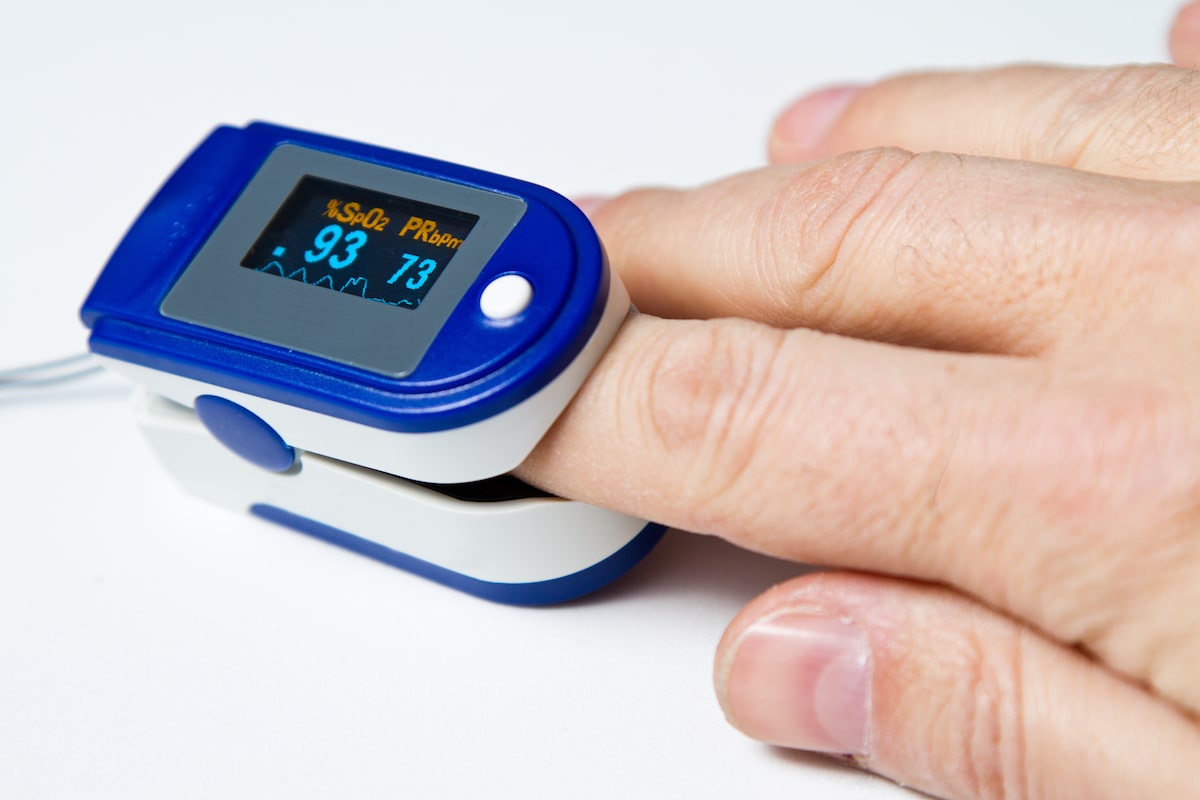<< Back
What Is a Pulse Oximeter? And Why Are People Buying Them During COVID-19?

June 08, 2020
If you’ve ever had a healthcare provider clip a small device onto the tip of your finger, red light flashing, you’ve experienced a pulse oximeter as it measures the level of oxygen in your bloodstream.
Pulse oximeters have become crucial tools in the fight against COVID-19, a virus that attacks the lungs and prevents them from properly circulating oxygen through the body. In the hospital, they are used on patients, but they can also be helpful at home to monitor your statistics, especially if you contract the virus.
How does it work?
Pulse oximeters pass beams of light through the finger and calculate the oxygen level in the red blood cells based on light absorption.
Why might it help?
People with seemingly mild cases of COVID-19 can quarantine at home, and a pulse oximeter can monitor blood oxygen levels to make sure they do not dip dangerously low without other symptoms. Low blood oxygen levels do not cause trouble breathing, so many aren’t seek help early enough, according to experts. When they do go to an emergency department, their oxygen levels can be dangerously low, causing a condition called hypoxia.
What is normal?
Blood oxygen is measured in percentages. A healthy reading is 95 to 100 percent. If your reading is 90 or less, contact your healthcare provider.
Typically, if levels dip too far, people go into respiratory failure, pass out or have seizures. That isn’t happening with COVID-19 patients, who are coming into the hospital complaining of other virus symptoms like fever and stomach ailments, but breathing well. When put on a pulse oximeter, their readings are astonishingly low and they often have pneumonia. This, doctors believe, is because the virus affects the lungs more gradually so patients’ bodies get used to the lower levels of oxygen.
Why is early diagnosis important?
Without care, pneumonia is leading to acute respiratory distress syndrome in almost 30 percent of people hospitalized with COVID-19, according to research published in the journal The Lancet. Some need ventilators to help them breath and others may die. A pulse oximeter used at home can notice a drop in blood oxygen levels before they pose a serious health risk.
Where can I get one?
Most retail pharmacies sell pulse oximeters for $25 to $50.
Should I still see my healthcare provider?
Let your primary care provider know you have a pulse oximeter. If your reading dips below 90, call and let them know. Having tools like a pulse oximeter or thermometer at home are not a substitute for a provider’s expertise, according to a statement from the American Lung Association.
Need to see your doctor? New Patient? For more information about Hartford HealthCare virtual health visits, click here.
Click here to schedule a virtual visit with a Hartford HealthCare-GoHealth Urgent care doctor.
Stay with Hartford HealthCare for everything you need to know about the coronavirus threat. Click here for information updated daily.
Questions? Call our 24-hour hotline (860.972.8100 or, toll-free, 833.621.0600).